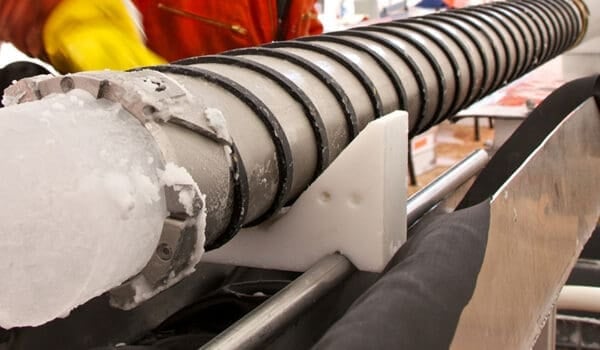Updated 30 September: NILU scientists first estimated that the total methane leaks from the Nord Stream gas pipes could be at least 40 000 tons. New estimates as of 30 September brings that number up to at least 80 000 tons. That is more than four times the Norwegian national annual methane emission from the oil and gas industry.
Seismological data showed two explosions at the Nord Stream pipelines just off the Swedish / Danish coastline. The first occurred at 02:03 Monday 26 September, the second at 19:03 Monday evening. Gas bubbles were seen on the ocean surface soon after.
Extreme methane levels at Birkenes
On Tuesday, measurements from the Birkenes observatory in Agder, Norway, as well as several sites in Sweden, showed extreme methane concentrations in the air (click for larger picture).
“We have never seen something like this at any of our observatories”, says senior scientist Cathrine Lund Myhre.
Scientists at NILU have calculated a preliminary estimate of a possible gas release volume over 24 hours based on the size of the pipeline.
“With many conservative assumptions about the actual pressure in the pipes, and release rate, we first found that at least 40 000 tons of methane may have been released into the ocean and atmosphere”, says senior scientist Stephen Matthew Platt. “We have now made new calculations, and as of 30 September, we estimate that at least 80 000 tons of methane has been released from the Nord Stream pipelines.”
According to the state bureau of statistics (SSB) in Norway, the Norwegian national annual emission of 17000 tons of methane from the oil and gas industry. The volume of methane gas released is well over four times that.
Renewable energy sources needed
Atmospheric monitoring show that methane has increased strongly in the atmosphere last 15 years.
“Methane is the second most important greenhouse gas from human activity after carbon dioxide (CO2)”, says senior scientist Cathrine Lund Myhre. “Over a 20-year period, methane is an 82 times more powerful greenhouse gas than CO2.”
Methane is considered to be a climate friendly energy source compared to e.g. coal.
“However, with leaks like this, the benefits are reduced”, says Lund Myhre. “Furthermore, this incident demonstrates the need of shifting to renewable energy sources to prevent such risks in the future.”
Methane gas cloud moves toward Svalbard
Such a large methane leak is very dramatic, but Platt points out that methane is only slightly toxic. Even amounts such as are now spreading through the atmosphere over large parts of southern Scandinavia is no health risk for humans or animals.
Platt, Lund Myhre and their colleague Sabine Eckhardt have used the model FLEXPART to simulate the transport and distribution of the methane gas cloud from the emissions. It suggested methane enhancements of several hundred parts per billion (ppb).
In the simulation, the methane cloud based on their estimated total emission from the Nord Stream pipes can be seen moving over the Nordic region (below).
“In a few days, we expect to see methane levels spike also at our Zeppelin Observatory on Svalbard”, Platt says.
Updated simulation (30. September 2022), showing how the methane gas cloud is released from the source and transported through the atmosphere. The simulation is based on data from ICOS monitoring stations. It does not show the total gas cloud, only the part of it that is close to the surface. Each grid cell used in the simulation is about 100 km x 100 km. National Centers for Environmental Prediction/National Weather Service/NOAA/U.S. Department of Commerce is acknowledged for providing the meteorological data. The simulation is not intended as and should not be used as a basis for public health advice. Source: NILU






